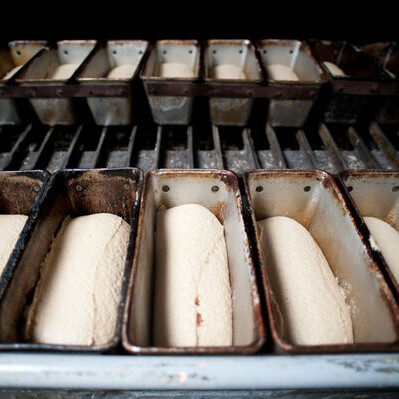Origin
Traditional release agents such as oil and butter have been used for centuries for the removal of baked goods from baking containers. The industrialization of baked products brought about the need for automation and the need for systems to help release the product and speed up production.
Today, a wide variety of release agents are used in the baking industry depending on the application, type of product, formulation, production process and desired shelf life of the product.2
Function
Release agents’ main function is to aid in the removal of baked goods from pans or packaging. These same substances often have other functions in the bakery system (e.g fats used for lubrication, aerating, and other functions).
Nutrition
Release agent’s nutritional contribution to baked goods is negligible.
Commercial production
The production and or synthesis of release agents varies with the type of agent.
Application
Release agents are used in the baking industry to improve the quality of the products and the production process of such products. Other benefits include: 4
- Cleaner work environment
- Reduction of undesirable build up in bakery wares and waste
- Increasing bakery wares lifespan
- Reduction of processing times
- Reduction of cost by improving the quality of the released products
- Efficient production process
Some considerations when choosing the right release agent for baked goods production:2,4
- Method of application: release agents can be sprayed, dripped or brushed on the surface of the baking pan or tray. In industrial applications, automatic systems such as air-less spray for low viscosity substances or air-mix spray systems for high viscosity substances are commonly used. Smaller scale bakeries use more traditional methods such as brushing or spraying directly from the can.
- Baked product formulation: high fat baked goods may require lower amounts of release agent.
- Baking process: processing conditions (e.g temperature, mixing times, baking times) should be taken into account when choosing the right release agent.
- Type of baking container: material, shape of container i.e. pan, tin or tray.
- Shelf life of the product: release agents should withstand the natural deterioration reaction of the baked goods and must be oxidation resistant to avoid quality deterioration.
Regulations
In the US, the FDA established that release agents are considered production aids and must follow the CFR Title 21 Part 178.3860.5
In the EU, release agents are considered production aids, and thus are regulated by the EU Commission Regulation No 1333/2008 on food additives.1
References
- Fedima. Position Paper 14/061: Status of Release Agents: .13 May 2014. Available at https://www.fedima.org/images/resources/food-safety/FS_-_release_agents_final.pdf. Accessed 04 December 2021.
- Sonneveld. “News Sonneveld .” Sonneveld.Com, 2021, https://www.sonneveld.com/en/sonneveld/news/product/most_common_release_agent_issues_and_challenges_in_industrial_confectionary .Accessed 04 December 2021.
- Jennings, D.R. “Release agent and method for use in baking applications.” U.S. Patent No. 7,494,682. 24 Feb. 2009.
- “Sonneveld Specialised In Release Agents And Dividing Oils.” Sonneveld.Com, 2021, https://www.sonneveld.com/en/service/Release_agent_advice .Accessed 04 December 2021.
- U.S. Department of Health and Human Services.” Food Additives Permitted For Direct Addition To Food For Human Consumption.Title 21 Code of Federal Regulation, Part. 178 Indirect Food Additives: Adjuvants, Production Aids and Sanitisers. Available at https://www.accessdata.fda.gov/scripts/cdrh/cfdocs/cfcfr/CFRSearch.cfm?fr=178.3860. Accessed 04 December 2021.

